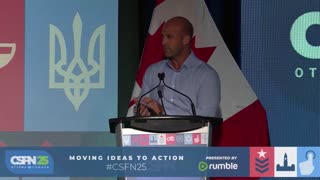Premium Only Content

BRAC's Microfinance Model:
BRAC's Microfinance Model:
BRAC, formerly known as the Bangladesh Rural Advancement Committee, is a prominent microfinance institution that was established in Bangladesh in 1972. It has since grown to become one of the largest and most successful microfinance organizations in the world. BRAC's model of microfinance has been widely recognized for its impact on poverty alleviation and empowering marginalized communities.
Key Features of BRAC's Microfinance Model:
01. Targeting the Poor.
02. Group-Based Lending.
03. Collateral-Free Loans.
04. Financial Education and Training.
05. Diverse Product Portfolio.
06. Social Development Programs.
07. Monitoring and Evaluation.
08. Impact and Recognition..
Targeting the Poor: BRAC primarily focuses on providing financial services to the poorest individuals and communities, particularly in rural areas. It aims to reach out to those who lack access to traditional banking services and are often excluded from the formal financial system.
Group-Based Lending: BRAC employs a group-based lending model, where borrowers are organized into small groups. These groups act as support networks and are responsible for ensuring repayment and providing mutual assistance. Each member of the group is liable for the repayment of loans taken by other members, fostering a sense of collective responsibility.
Collateral-Free Loans: BRAC offers collateral-free loans, recognizing that many of its clients lack assets or formal property rights. This approach allows even the poorest individuals to access credit and start income-generating activities without the need for traditional collateral.
Financial Education and Training: Alongside financial services, BRAC emphasizes financial literacy and education. It provides training and capacity-building programs to enhance the financial management skills of borrowers. This empowers individuals to make informed decisions, manage their loans effectively, and develop sustainable livelihoods.
Diverse Product Portfolio: BRAC offers a range of financial products tailored to the needs of its clients. These include microloans for income-generating activities, savings accounts, insurance, and remittance services. By diversifying its product portfolio, BRAC aims to address various aspects of financial inclusion and cater to the diverse needs of its clients.
Social Development Programs: BRAC integrates microfinance with social development initiatives, such as healthcare, education, and women's empowerment. It recognizes the interconnectedness of poverty and social issues and implements comprehensive programs to address these challenges holistically.
Monitoring and Evaluation: BRAC emphasizes rigorous monitoring and evaluation to ensure the effectiveness and impact of its microfinance programs. It collects data and measures key performance indicators to assess the progress and make informed decisions for program improvement.
Impact and Recognition:
BRAC's microfinance model has achieved significant success over the years. By providing access to financial services and supporting income-generating activities, it has played a crucial role in poverty reduction and women's empowerment. BRAC's efforts have received recognition globally, and it has served as an inspiration for microfinance institutions worldwide.
It's worth noting that since my knowledge cutoff is in September 2021, there may have been further developments or changes in BRAC's microfinance model beyond that time. For the most up-to-date and detailed information, I would recommend visiting BRAC's official website or referring to recent publications and reports on their microfinance activities.
-
 1:02:43
1:02:43
Michael Franzese
2 hours agoThis is EXACTLY How Mafia Infiltrated the NYPD for Nearly 2 Decades
13.6K2 -
 2:19:06
2:19:06
The Quartering
3 hours agoTrumps SAVE Act Passes, China Amazon Sellers PANIC, Russell Brand's Bad Take, & More
178K38 -
 11:47
11:47
Talk Nerdy Sports - The Ultimate Sports Betting Podcast
58 minutes ago4/10/25 - "Game On: Tech Titans Unleash Secret Betting Formulas!"
2.48K -
 1:34:00
1:34:00
The Sage Steele Show
1 day agoMeghan McCain | The Sage Steele Show
10.7K5 -
 1:27:23
1:27:23
Russell Brand
4 hours agoThe Trans Con: How Did We Miss THIS?! – SF564
138K33 -
 LIVE
LIVE
The HotSeat
1 hour agoMinecraft Mania and Tim Poole’s Wild Take – What Is Happening?!
522 watching -
 LIVE
LIVE
Revenge of the Cis
2 hours agoEpisode 1472: Pocket Pool
992 watching -
 LIVE
LIVE
Barry Cunningham
3 hours agoWATCH LIVE: MY INTERVIEW WITH LARA TRUMP! AND TODAY'S NEWS ABOUT DEMOCRATS HATING AMERICA!
1,261 watching -
 22:32
22:32
Stephen Gardner
1 day ago🔥 Trump DEMANDS Treason Charges — Mocks Adam Schiff on Stage!
28.2K100 -
 LIVE
LIVE
Canada Strong and Free Network
8 hours agoCanada Strong and Free Network
229 watching